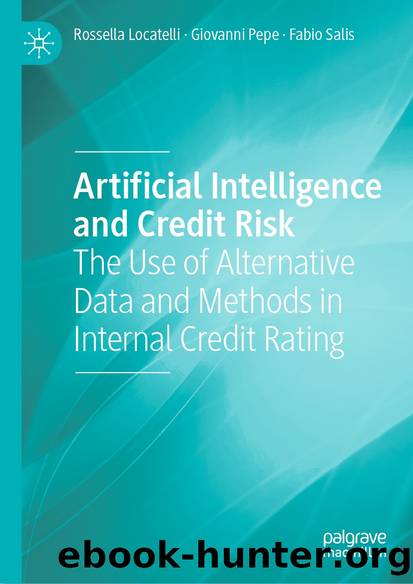Artificial Intelligence and Credit Risk by Rossella Locatelli & Giovanni Pepe & Fabio Salis

Author:Rossella Locatelli & Giovanni Pepe & Fabio Salis
Language: eng
Format: epub
ISBN: 9783031102363
Publisher: Springer International Publishing
In the experience of one of the authors, deep neural networks are a particularly versatile tool to structure models of this type for a number of different reasons. First and foremost, neural networks have an extremely strong ability to learn and adapt to the data, in the sense that they can grasp the relationships between the data and the target variable even when such relationships are extremely non-linear. Second, neural networks can be organised to recognise qualitative elements within unstructured data and transform them into structured information. Additionally, they lend well to combining typically quantitative elements (i.e., signal intelligence [SigInt]) with qualitative elements (i.e., human intelligence [HumInt]). Lastly, they can be structured so as to request additional information when the system does not consider the feeding process sufficiently robust.
The contribution of a model of this type is measured by comparing the expected losses of a portfolio with a similar composition and risk as with those of a portfolio selected and managed with the deep learning system and whose composition and risk is similar to the former,6 as indicated in the three formulas below:
Download
This site does not store any files on its server. We only index and link to content provided by other sites. Please contact the content providers to delete copyright contents if any and email us, we'll remove relevant links or contents immediately.
| Corporate Finance | Crowdfunding |
| Financial Engineering | Financial Risk Management |
| Wealth Management |
The Black Swan by Nassim Nicholas Taleb(7010)
Bad Blood by John Carreyrou(6543)
Pioneering Portfolio Management by David F. Swensen(6226)
Millionaire: The Philanderer, Gambler, and Duelist Who Invented Modern Finance by Janet Gleeson(4374)
Skin in the Game by Nassim Nicholas Taleb(4161)
Bullshit Jobs by David Graeber(4094)
The Money Culture by Michael Lewis(4075)
Skin in the Game: Hidden Asymmetries in Daily Life by Nassim Nicholas Taleb(3929)
The Wisdom of Finance by Mihir Desai(3650)
Blockchain Basics by Daniel Drescher(3501)
Liar's Poker by Michael Lewis(3367)
Fooled by Randomness: The Hidden Role of Chance in Life and in the Markets by Nassim Nicholas Taleb(3043)
Hands-On Machine Learning for Algorithmic Trading by Stefan Jansen(3027)
The Intelligent Investor by Benjamin Graham Jason Zweig(2995)
Mastering Bitcoin: Programming the Open Blockchain by Andreas M. Antonopoulos(2980)
The Power of Broke by Daymond John(2896)
Investing For Dummies by Eric Tyson(2894)
Market Wizards by Jack D. Schwager(2643)
Zero Hour by Harry S. Dent Jr. & Andrew Pancholi(2614)
